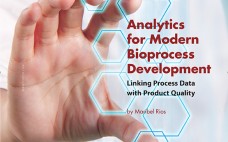Twelve years ago, about the same time the US Food and Drug Administration was putting the finishing touches on its quality by design (QbD) and process analytical technology (PAT) guidelines, I wrote an article about breakthrough pharmaceutical educational programs. That article included the perspectives from a few members in academia of the future essential skills for pharmaceutical students. At the time, bioinformatics and computerized industrial process modeling were relatively new disciplines, but their importance in future manufacturing was clear. Several…
Special Reports
Enabling Technologies
Many technological advancements in recent years have enabled companies to shorten time to market, to better understand their manufacturing processes, and to characterize their products well. In BPI’s December 2013 issue (pages 47–50), I reported on the first half of an informal reader survey about those technologies, with commentary from some survey participants and others. This month concludes with my examination of analytical, formulation/fill–finish, and facilities technologies. Analytical Technologies After writing several installments of our new “BPI Lab” series this…
Enabling Technologies
We hear a great deal lately about the maturation of the biopharmaceutical industry — and much advancement over the past decade or so has been in business models, financing, and product pipelines. Meanwhile, regulators around the world have become more well versed in the subject matter and have adjusted their approaches to and expectations from the industry. However, the practical side of developing, characterizing, and manufacturing biotherapeutic products cannot be overlooked — nor its importance overstated. Many technological…
Protein A
The number of blockbuster monoclonal antibody (MAb) drugs continues to grow. In 2008, MAbs generated revenues in excess of US$15 billion (1), making them the highest-earning category of all biotherapeutics. The world MAb market will reach $62.3 billion in 2015, with next-generation therapeutic antibody revenues reaching $2.3 billion in 2015 according to Visiongain reports published in September and November 2011 (2, 3). Biosimilar antibodies will also begin to enter established markets as regulatory authorities clear approval pathways for them. Most…
Better Cells for Better Health
Since its inception 35 years ago, the biennial meeting of the European Society for Animal Cell Technology (ESACT) has built on a tradition of combining basic science and applications into industrial biotechnology to become the international reference event in its subject matter. Every other year, this gathering of academics and industry professionals features a famously exciting social program and an extensive vendor/supplier exhibition specific to animal cell technology. ESACT meetings are much-anticipated international venues for information exchange, inspiration, networking, and…
PEGylation of Biologics
In the 1970s, life-science researchers envisioned protein therapeutics as the ultimate targeted therapy. Companies could use them to address genetic deficiencies and cancer, among other disease classes, as well as to nudge the immune system for treating autoimmune disorders. The first therapeutic proteins were derived from animal or microbial cells, so patients launched immune responses to them that could curtail their activity and produce dangerous side effects. PEGylation was initially used to prevent immune responses with such drugs. PEG is…
A Decade of Success
After nearly a year of planning, BPI announced the winners of its first awards program on the evening of 9 October 2012, during the BioProcess International Conference. Award finalists, sponsors, and guests joined us for a banquet ceremony in the Providence, RI, Convention Center to honor the 36 finalists for our Decade of BioProcess awards — and announce the 12 winners. In his welcoming comments to the 150 attendees, BPI publisher Brian Caine noted that “during this…
Toward Nonantibody Platforms
Monoclonal antibodies (MAbs) remain the largest segment of the biopharmaceutical market, but they are not the only recombinant proteins in development. Remember that the first biopharmaceutical approved for sale was recombinant insulin — a hormone — back in the 1980s. And proteins aren’t the only recombinant biologics. The sector has expanded since then to include gene therapies and viral vectors, vaccines, and even cells and tissues. Companies around the world are developing such products for cancer, neurological, infectious disease, metabolic,…
Regenerative Medicine
The year 2011 may be seen as one in which regenerative medicine entered its adolescence. Public attention — from investors to desperate patients — finally turned toward this nascent industry with something other than skepticism or unrealistic expectations. The FDA’s approval of Dendreon’s Provenge cellular immunotherapy switched on the spotlight, and cell therapy companies suddenly faced a barrage of questions about cost, manufacturing issues, product development, and patient access. US Policy: In May 2011, US representatives Brian Bilbray…
Fill and Finish for Biologics
As most novelists will tell you, if you make substantial changes to the beginning of a story, you may well need to revise your preestablished conclusion. Similarly, as approaches to process design and development change, new tools, technologies, and various shifting “paradigms” also affect the way companies approach final formulation, filling, and finish steps. As yet another ref lection of increased process understanding and quality-by-design’s (QbD’s) holistic approach to biopharmaceutical development, those final steps — traditionally outsourced by…

